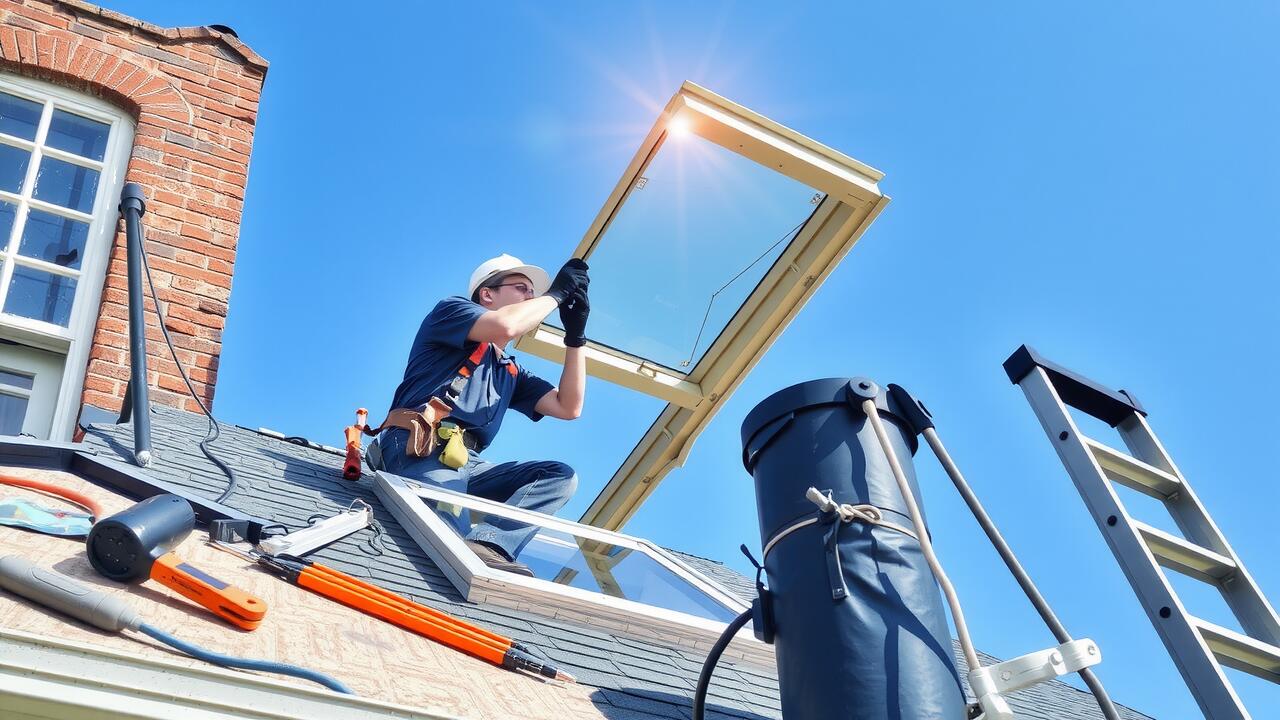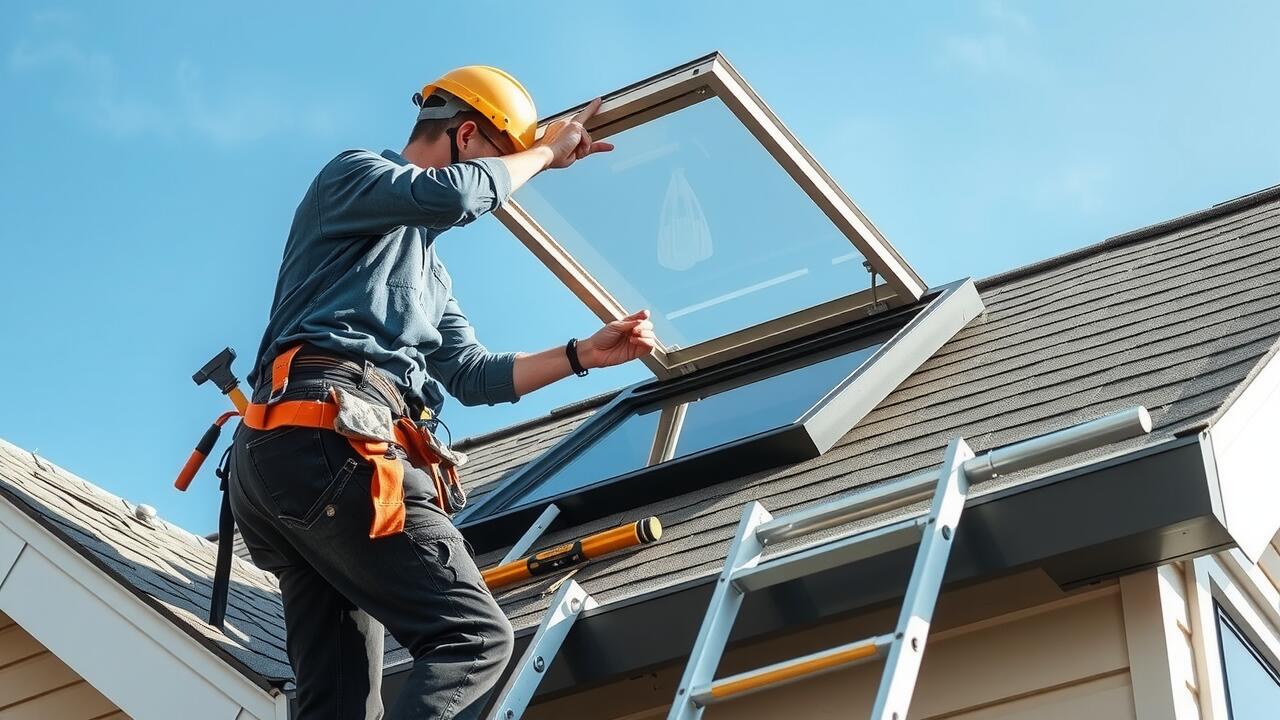
Energy Efficiency Considerations
Energy efficiency is a significant factor to consider when planning a skylight installation. Properly installed skylights can reduce the need for artificial lighting during daylight hours, leading to potential energy savings. The orientation and size of the skylight, along with the choice of glazing materials, play a crucial role in optimizing energy performance. By allowing natural light to flow into the space, homeowners can also enhance their living environment while decreasing reliance on electrical systems.
In addition to lighting benefits, energy efficiency can be maximized through the use of energy-efficient glazing. Low-emissivity (Low-E) coatings can minimize heat loss in winter and keep spaces cooler during the summer, contributing to a more stable indoor temperature. Proper insulation around the skylight’s frame can reduce air leakage, further improving the energy performance of a home. When selecting materials and planning your skylight installation, these considerations can significantly impact long-term savings on energy bills.
Choosing the Right Glazing
When selecting the right glazing for a skylight, several factors should be considered to optimise energy efficiency and comfort. Double-glazed units are a popular choice as they provide better insulation compared to single-glazed options, reducing heat loss during colder months. Additionally, the type of coating on the glass can affect solar heat gain. Low-emissivity (Low-E) coatings reflect infrared light while allowing visible light to pass, enhancing energy savings and maintaining comfortable indoor temperatures.
The durability of the glazing material also plays a significant role in the longevity of the skylight. Acrylic and polycarbonate are lightweight and impact-resistant options, suitable for various climates. Tempered glass offers high strength, making it a reliable choice for areas prone to extreme weather conditions. Considering both energy efficiency and material durability is crucial during the skylight installation process. This ensures that your skylight serves its purpose effectively while contributing to the overall aesthetics of your home.
Installation Process Overview
Skylight installation involves a series of well-defined steps to ensure proper fitting and functionality. This process typically begins with selecting the ideal location on the roof, considering factors such as sun exposure and structural integrity. After determining the best spot, the roof shingles are carefully removed to expose the underlying materials. Precise measurements are taken to outline the opening for the skylight, ensuring a snug fit that will prevent leaks and enhance energy efficiency.
Once the opening is cut, installers frame it with structural supports to maintain the roof’s strength. They then carefully place the skylight into the framed opening, sealing it with appropriate flashing to protect against water infiltration. Insulation is added around the edges to improve energy efficiency. Finally, the skylight is connected and tested for functionality, ensuring that it not only looks good but also performs well in various weather conditions.
Steps Involved in Skylight Installation
Before beginning skylight installation, it is essential to select an appropriate location. The chosen spot should receive ample natural light while avoiding unwanted heat gain during summer months. Contractors will typically measure the area to ensure compatibility with the skylight size. Planning for the installation involves checking for any obstructions, such as electrical wiring or plumbing, that could affect the process. Proper assessment will lead to a smoother installation experience.
Once the site is prepared, the next steps in skylight installation include cutting an opening in the roof and framing it securely. This process often involves using roofing brackets or trusses for additional support. After creating the opening, the skylight unit is installed, ensuring it is level and watertight. Proper sealing is crucial to prevent leaks or water damage in the future. Finally, the finishing touches include adding flashings and interior trims to enhance both functionality and aesthetics.
Maintenance and Longevity
Regular maintenance is crucial for ensuring the longevity of skylights. Homeowners should inspect the seals around the skylight periodically. Any signs of wear or damage can lead to leaks, which compromise energy efficiency and indoor comfort. Cleaning the glass surface helps maintain optimal light transmission and prevents the buildup of debris that can obscure views.
The materials used in skylight installation play a significant role in durability. Quality glazing options, along with sturdy frames, can withstand harsh Canadian weather conditions. Implementing preventive measures, such as clearing snow or ice buildup during winter months, can further extend the skylight’s lifespan. Regular checks for any structural changes in the roof can also help to identify potential issues before they escalate.
Keeping Your Skylight Functional
Regular maintenance is essential to keep your skylight functional for years to come. Start by checking the seals and flashing around the skylight for any signs of wear or damage. Proper sealing prevents leaks, which can lead to water damage and other issues. Cleaning the glass regularly helps maintain clarity and brightness, enhancing the benefits of the natural light your skylight provides.
In addition to visual inspections, ensure that the surrounding area is free of debris. Leaves and dirt can block sunlight and create unwanted moisture. If your skylight comes with a venting option, exercise it periodically to allow for ventilation and reduce the accumulation of condensation. By investing time in these routine tasks, homeowners can ensure their skylight installation continues to deliver its intended advantages.
FAQS
What is the average cost of installing a skylight in Canada?
The average cost of installing a skylight in Canada typically ranges from CAD 1,000 to CAD 3,000, depending on factors such as the type of skylight, size, and installation complexity.
Are there additional costs associated with skylight installation?
Yes, additional costs may include structural modifications, permits, and the choice of glazing. It’s essential to factor in these potential expenses when budgeting for your skylight installation.
How does energy efficiency impact skylight installation costs?
Energy-efficient skylights may have a higher upfront cost but can save you money on heating and cooling bills in the long run. They may also qualify for government rebates, which can help offset installation costs.
What is the expected lifespan of a skylight?
A well-installed and maintained skylight can last between 10 to 20 years. Choosing high-quality materials and glazing can enhance its longevity.
How can I maintain my skylight to ensure its functionality?
Regular maintenance includes cleaning the glass, checking for leaks or cracks, and ensuring that the flashing is intact. It’s also advisable to have a professional inspection every few years to address any potential issues early.
